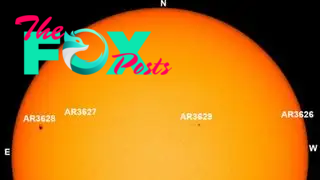Science
The sun is surprisingly quiet right now. What does this mean for the April 8 total solar eclipse?
The sun seems to be taking an unexpected nap right now — just in time for the April 8 total solar eclipse on Monday.
Until recently, solar activity has been very high, which has raised hopes that we may be able to see solar storms shooting out of our home star during totality — the period when the sun is completely blocked out by the moon. But this now seems unlikely, according to the latest space weather forecasts.
However, if you can get an unobstructed view of our home star from somewhere along the path of totality, it should still look much more impressive than during most other eclipses, experts say.
The sun is currently nearing solar maximum, the explosive peak of its roughly 11-year solar cycle when dark sunspots litter the sun's surface and frequently spit out powerful solar storms. Some experts believe that this phase may have already begun, around a year earlier than initially forecast. But we will not know for sure until long after it is over.
Over the last two months, solar activity has been exceptionally high. We have seen gigantic sunspots, frequent X-class solar flares (the most powerful class of solar explosion) and towering plasma plumes. On March 23, Earth also experienced its biggest geomagnetic storm in more than six years after a giant cloud of plasma and radiation, known as a coronal mass ejection (CME), smashed into the planet.
Related: April 8 solar eclipse: What time does totality start in every state?

Right now, however, the sun is surprisingly quiet. There are just a couple of active sunspot regions on the sun's nearside to Earth, which are much smaller than those we have seen in the last few weeks, according to Spaceweather.com. The orientation of these regions' magnetic fields also hints that there is a low chance they will be spitting out solar flares or CMEs between now and the eclipse, according to Earthsky.com.
-

 Science2d ago
Science2d agoInside Capitol Hill’s Latest UFO Hearings
-

 Science2d ago
Science2d agoYou Won’t Want to Miss the Leonid Meteor Shower. Here’s How and When You Can See It
-

 Science3d ago
Science3d agoHere’s What Trump’s Win Means for NASA
-

 Science6d ago
Science6d agoWhy Risky Wildfire Zones Have Been Increasing Around the World
-

 Science6d ago
Science6d agoIt’s Time to Redefine What a Megafire Is in the Climate Change Era
-

 Science1w ago
Science1w ago4 Astronauts Return to Earth After Being Delayed by Boeing’s Capsule Trouble and Hurricane Milton
-

 Science1w ago
Science1w agoThe Elegance and Awkwardness of NASA’s New Moon Suit, Designed by Axiom and Prada
-

 Science1w ago
Science1w agoSpaceX Launches Its Mega Starship Rocket. This Time, Mechanical Arms Catch It at Landing



























